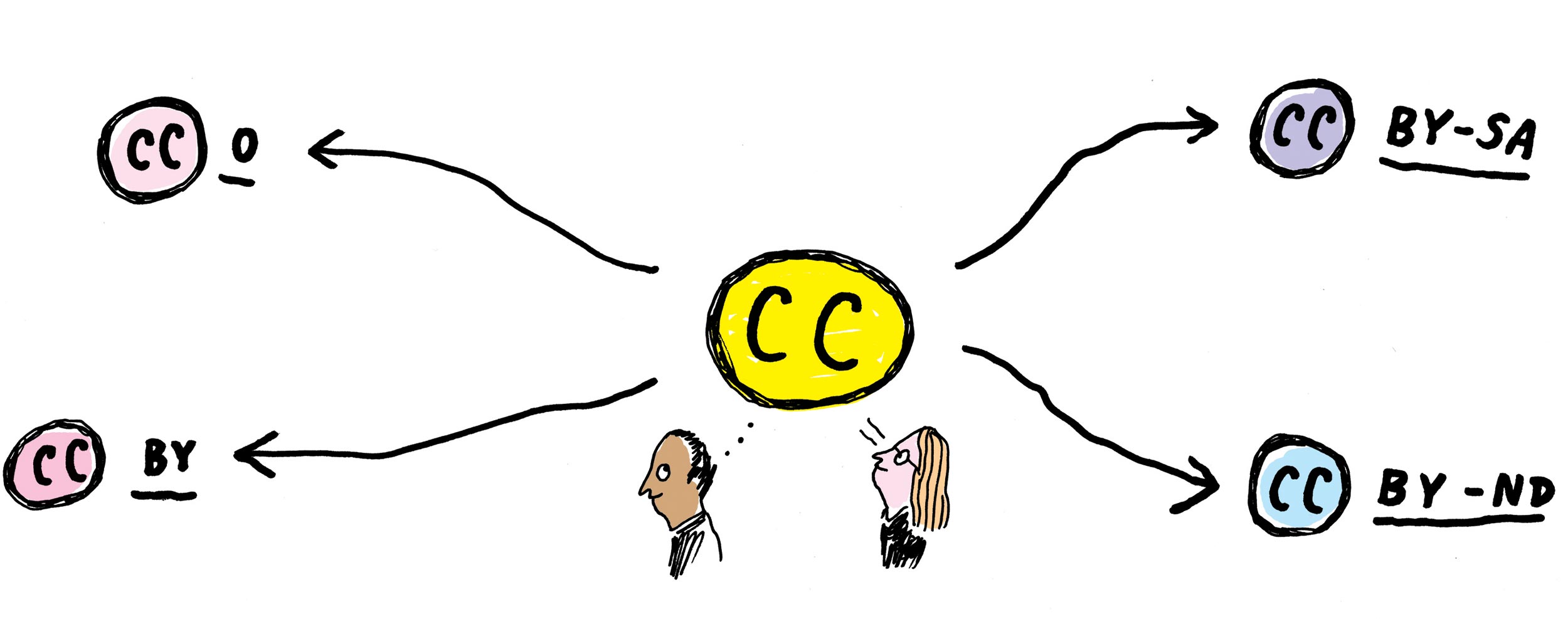Open educational resources
WORK SHEET 17

You want to contribute actively to the digital transformation of teaching? You have created course materials, textbooks, videos, multimedia applications or podcasts for teaching and want to reach a wider audience? Then transform your teaching materials into Open Educational Resources (see UNESCO definition). Have a look at the different kinds of licences below.
Duration 15 min for familiarising yourself with licence types PLUS 20 min for publishing your first OER
Become familiar with the Creative licence family for Open Educational Resources (OER).
CC 0 – public domain
Material licensed with this is in the public domain and you renounce your legal rights as author. People who use this material do not need to name a source.
CC BY – “made BY Kim Smith”
CC BY requires stating a name. People who use your material under a CC BY licence must name you as the author. There are no other restrictions; materials can be reworked and disseminated.
CC BY-SA – “made BY Kim Smith” PLUS share under same condition
CC BY-SA requires that secondary users state the author’s name and disseminate it under the same conditions. SA means “Share Alike”. Secondary users must publish the material under the same CC BY-SA licence after they have altered it.
CC BY-ND – “made BY Kim Smith” PLUS no modification
There is also the CC BY-ND licence. ND means “No Derivatives”, i.e. no modification. Your original material can only be used in its original form, your name must be stated (BY) and may not be altered.
Now publish your teaching material under a Creative Commons licence, preferably one of the first three.
Checklist:
- Learn about Creative licences
- Select teaching material for a first trial
- State licence clearly in your material
- Publish OER
- Via Social Media auf die erste erstellte OER aus Ihrer Feder hingewiesen
Advertise your first OER on social media
Date: September 2020
Questions, comments and notes are welcome at open-science@zbw.eu
